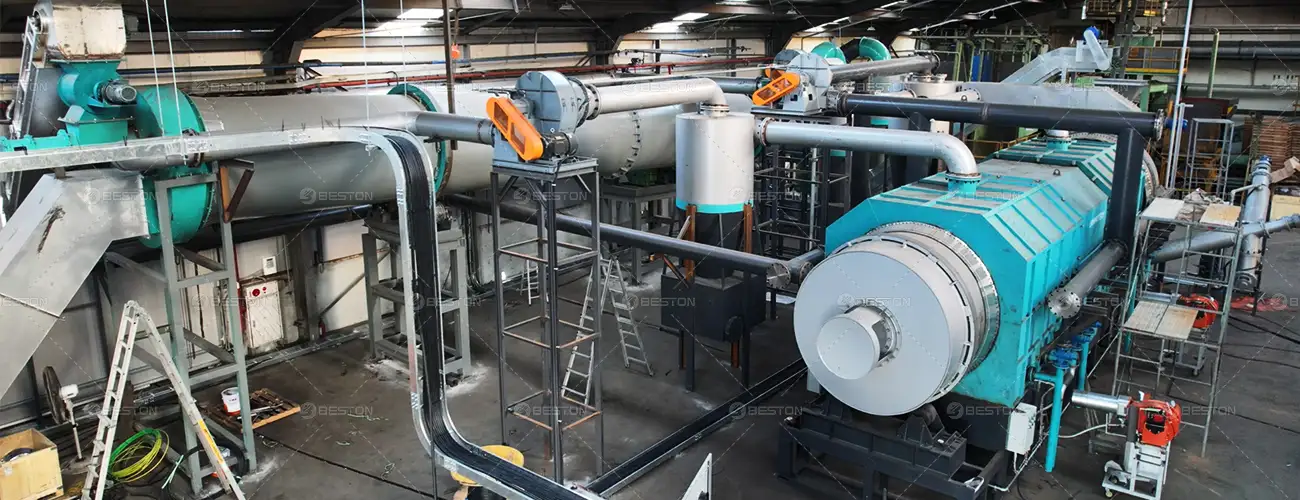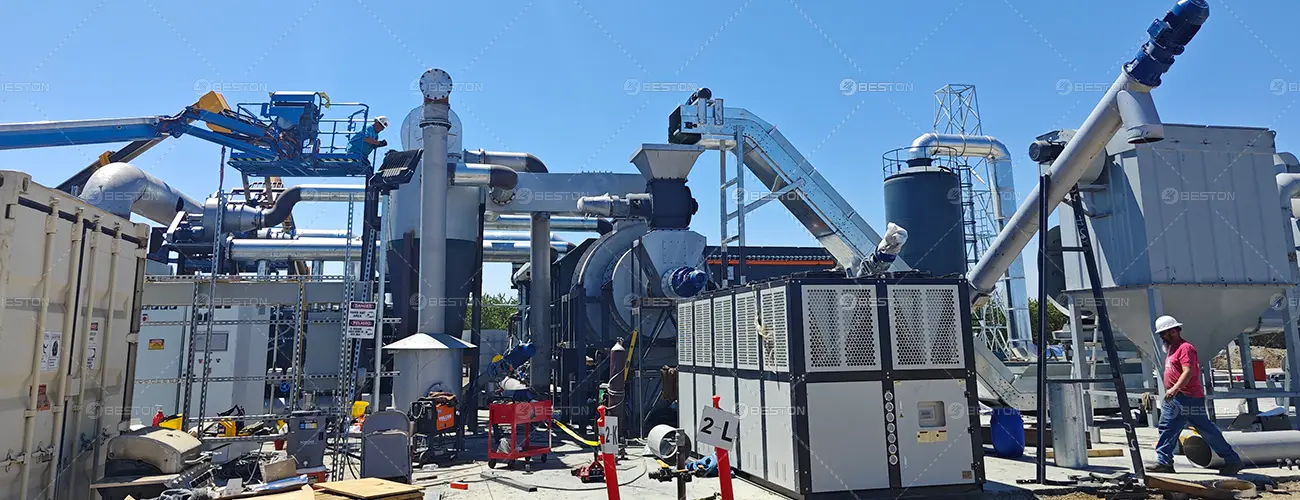The management of agricultural waste, such as straw, is a growing concern worldwide. Straw burning, although a common practice, is increasingly under scrutiny due to its environmental impact. On the other hand, converting straw into charcoal through a process known as pyrolysis offers a more sustainable and environmentally-friendly solution. The advantages of straw carbonization over open burning are evident when considering air quality, soil health, and the potential for energy recovery.
Environmental Impact: Air Quality Improvement
One of the most significant drawbacks of straw burning is the large amount of smoke and particulate matter it generates. Open burning releases harmful gases, such as carbon dioxide, carbon monoxide, methane, and other volatile organic compounds. These pollutants contribute to air pollution and have been linked to various respiratory and cardiovascular diseases.
In contrast, straw pyrolysis, performed in a charcoal production machine, occurs in a controlled environment, significantly reducing harmful emissions. During pyrolysis, straw is heated in the absence of oxygen, breaking down the organic material into solid biochar, liquid bio-oil, and combustible gases, with minimal emissions of particulate matter. The gases produced can be used as fuel to power the pyrolysis process, further enhancing its environmental sustainability.

Carbon Sequestration and Soil Health
Straw burning releases large amounts of carbon dioxide into the atmosphere, contributing to global warming and climate change. In addition to the carbon released, burning destroys valuable organic material that could otherwise enrich the soil. Charcoal, produced through pyrolysis, has the potential to be used as a soil amendment, improving soil structure, fertility, and water retention.
Biochar, the product of biochar pyrolysis equipment, is a stable form of carbon that can remain in the soil for hundreds or even thousands of years. When applied to soil, biochar helps sequester carbon, reducing the overall greenhouse gas emissions from agricultural practices. Additionally, biochar has been shown to enhance microbial activity in soil, increasing nutrient availability and improving plant growth. This makes it a valuable tool for sustainable agriculture, turning agricultural waste into a resource for enhancing soil health.
Energy Recovery from Straw Waste
Straw burning provides no direct means of energy recovery beyond the heat produced during the burning process. The energy released from burning straw is dissipated into the atmosphere and is not captured for further use. This is in stark contrast to pyrolysis, which enables energy recovery in the form of syngas and bio-oil.
During pyrolysis, the gases produced can be used to fuel the straw charcoal machine itself, reducing the need for external energy sources and lowering operational costs. The bio-oil produced during the process can also be used as an industrial fuel or further refined into higher-value products. By recovering energy from straw, pyrolysis presents a more efficient method of utilizing agricultural waste compared to open burning, where energy is wasted and pollutants are released into the atmosphere.
Reduction of Agricultural Waste and Waste Management Benefits
Burning straw often leads to unproductive land and unnecessary air pollution. By converting straw to biochar, a valuable byproduct is created that can be marketed for various applications, including agriculture, energy, and industrial sectors. This method of waste management not only reduces the environmental burden but also transforms agricultural waste into a commercial asset.
Furthermore, straw burning contributes to soil degradation, as the process results in the loss of essential nutrients that are necessary for future crop growth. By diverting straw waste to a pyrolysis plant, the waste is effectively managed while simultaneously producing a product that benefits the soil, reduces greenhouse gas emissions, and can be sold as a renewable energy source.
Long-Term Economic Benefits
While the upfront cost of installing a pyrolysis plant for straw carbonization may be higher than the practice of burning straw, the long-term economic benefits are substantial. The sale of biochar, bio-oil, and other byproducts provides a profitable revenue stream. The market for biochar, in particular, is growing as more agricultural and environmental sectors recognize its benefits. Additionally, the reduction of carbon emissions through the use of biochar for carbon sequestration can open the door for carbon credits, contributing to the financial viability of the project. Learn more about agricultural waste pyrolysis solutions: https://bestonmachinery.com/
In contrast, burning straw offers no such economic advantages. The practice of open burning not only results in the loss of valuable nutrients and organic material but also contributes to potential penalties related to air pollution regulations in many regions.

Regulatory Compliance and Sustainability
In many countries, regulations concerning air quality are becoming stricter. Straw burning, due to its high emissions, may soon face more limitations or bans in areas that have high levels of air pollution. In contrast, the carbonization of straw in a pyrolysis plant aligns with global sustainability goals. By adopting pyrolysis over burning, businesses and agricultural operations can ensure compliance with environmental regulations and contribute positively to reducing the carbon footprint of agricultural practices.
In Summary
The carbonization of straw through pyrolysis is a far superior option compared to traditional burning. It mitigates environmental pollution, enhances soil health, recycles energy, and creates economic opportunities. The process of converting straw into biochar provides a sustainable and profitable solution for agricultural waste management. As global awareness of environmental issues grows, the shift toward more sustainable practices, such as pyrolysis, becomes increasingly essential for long-term environmental health and economic prosperity.